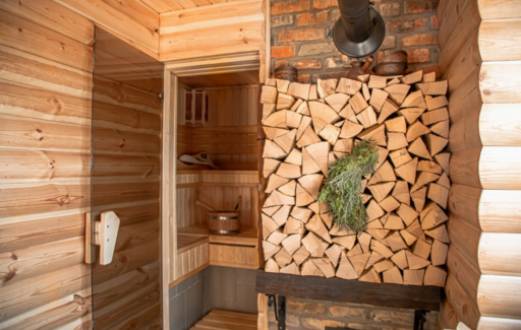Thermometers and Hygrometers: Monitoring Sauna Conditions
22 June 2025 by Lukas V.As a sauna enthusiast, it is essential to monitor the conditions within your sauna to ensure a safe and enjoyable experience. One of the key tools for this task is a thermometer, which measures the temperature, and a hygrometer, which measures the humidity levels. In this article, we will discuss how to properly calibrate your sauna thermometer, the importance of using hygrometers to maintain optimal humidity levels, and tips for monitoring sauna conditions to create the perfect sauna experience. We will also compare different types of thermometers and hygrometers to help you make an informed decision for your sauna setup.

How to Properly Calibrate Your Sauna Thermometer
Calibrating your sauna thermometer is an essential step in ensuring that you are getting accurate temperature readings during your sauna sessions. To properly calibrate your sauna thermometer, you will need a glass of ice water and a small container of boiling water. Start by filling a glass with ice water and allowing it to sit for a few minutes to ensure that it reaches a temperature of exactly 32 degrees Fahrenheit (0 degrees Celsius). Once the ice water has reached the proper temperature, place the thermometer in the glass, making sure that the sensor is completely submerged. After a minute or so, check the reading on the thermometer. It should read very close to 32 degrees Fahrenheit (0 degrees Celsius). If it does not, you will need to adjust the thermometer accordingly. Most thermometers come with a calibration screw that can be adjusted to correct any discrepancies in temperature readings. Next, you will need to test the thermometer in boiling water to ensure that it is accurately reading higher temperatures as well. Simply bring a small pot of water to a boil and carefully place the thermometer in the water, making sure once again that the sensor is completely submerged. After a minute or so, check the reading on the thermometer. It should read very close to 212 degrees Fahrenheit (100 degrees Celsius). If it does not, you will need to adjust the calibration screw until the thermometer is accurately reading the boiling point of water. By properly calibrating your sauna thermometer, you can ensure that you are getting accurate temperature readings during your sauna sessions, allowing you to enjoy a safe and comfortable sauna experience.Using Hygrometers to Maintain Optimal Humidity Levels in Your Sauna
Hygrometers are essential tools for maintaining the optimal humidity levels in your sauna. These devices measure the amount of moisture in the air, allowing you to adjust the steam levels to ensure a comfortable and effective sauna experience. To use a hygrometer in your sauna, simply place it in a central location where it can accurately measure the humidity levels. Ideally, the humidity in a sauna should be between 10-30%, depending on personal preferences and the type of sauna you have. By regularly monitoring the humidity levels with your hygrometer, you can make adjustments to the steam generator or add water to the hot rocks to maintain the desired moisture levels. Maintaining the proper humidity levels in your sauna is crucial for both safety and enjoyment. If the humidity is too low, the air in the sauna will feel dry and uncomfortable, while excessively high humidity can lead to excessive sweating and discomfort. By using a hygrometer to monitor and regulate the humidity levels, you can ensure a safe and relaxing sauna experience every time. In conclusion, hygrometers are valuable tools for maintaining the optimal humidity levels in your sauna. By regularly monitoring the humidity levels with a hygrometer, you can adjust the steam levels to create a comfortable and enjoyable sauna environment. Ensure a safe and relaxing sauna experience by using a hygrometer to maintain the proper humidity levels in your sauna.Monitoring Sauna Conditions: Tips for Ensuring a Safe and Enjoyable Experience
Here are some tips to help you maintain the optimal environment:Regularly check the temperature: It is important to regularly check the temperature inside your sauna to make sure it is within a safe range. Most saunas have a built-in thermometer, but it is a good idea to also have a separate thermometer on hand to double-check the temperature.
Monitor humidity levels: In addition to temperature, humidity levels should also be closely monitored in the sauna. High humidity can make the sauna feel unbearably hot, while low humidity can dry out the air and make it difficult to breathe. A hygrometer can be used to measure humidity levels and ensure they are within a comfortable range.
Keep an eye on the time: It is important to limit your time in the sauna to avoid overheating. Most experts recommend staying in the sauna for no more than 15-20 minutes at a time. Make sure to have a timer on hand to keep track of how long you have been in the sauna.
Stay hydrated: Saunas can cause you to sweat profusely, which can lead to dehydration if you are not careful. Make sure to drink plenty of water before, during, and after your sauna session to stay hydrated.
Pay attention to your body: It is important to listen to your body while in the sauna. If you start to feel dizzy, lightheaded, or nauseous, it is time to exit the sauna immediately. Do not push yourself past your limits. By following these tips and closely monitoring sauna conditions, you can ensure a safe and enjoyable experience for yourself and others using the sauna.